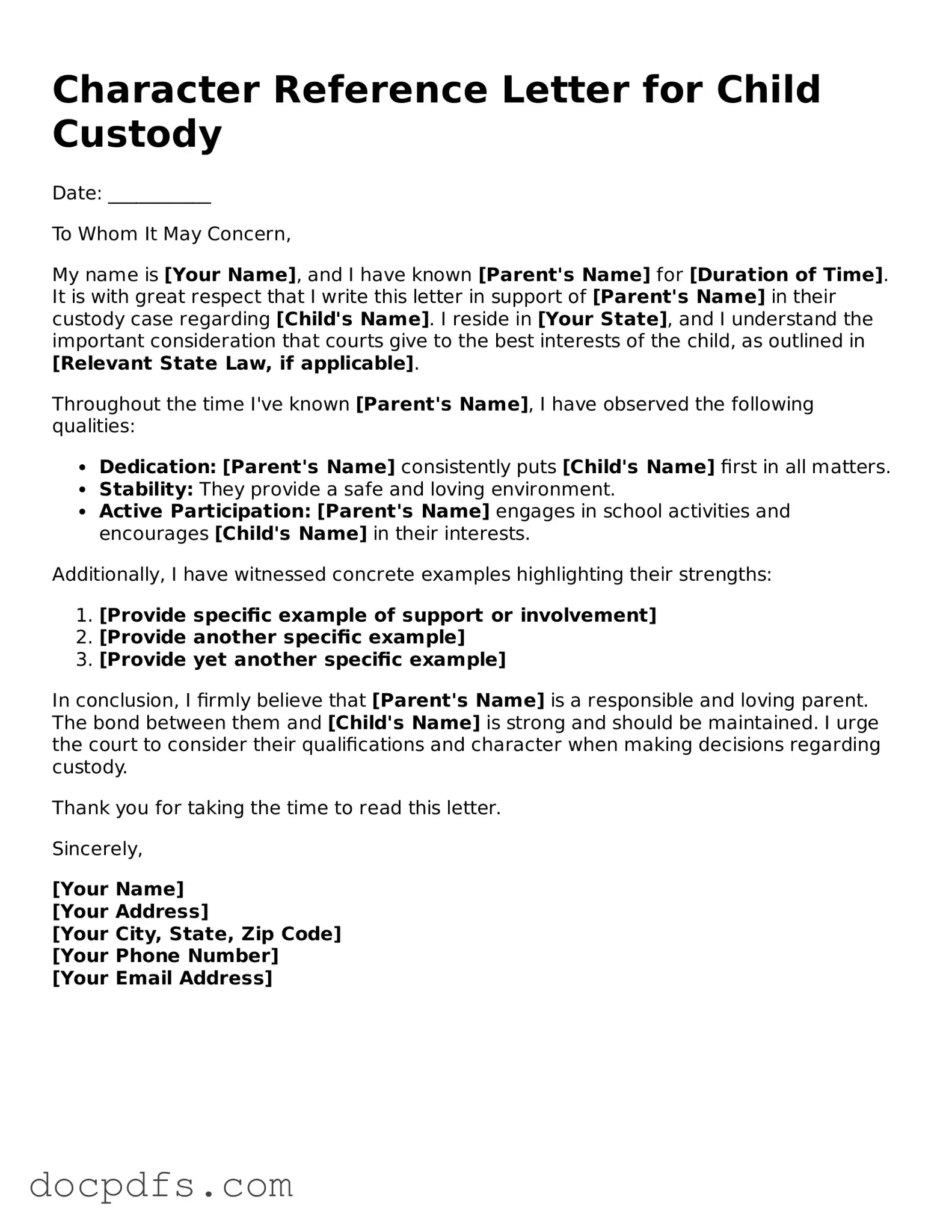What is a Character Reference Letter for Child Custody?
A Character Reference Letter for Child Custody is a document that provides insight into a parent's character and suitability for custody. It is typically written by someone who knows the parent well, such as a friend, family member, teacher, or community leader. The letter can support the parent's case in custody proceedings by highlighting their parenting skills, moral character, and commitment to the child's well-being.
Who should write a Character Reference Letter?
Anyone who has a close and positive relationship with the parent seeking custody can write a Character Reference Letter. Ideal writers include:
-
Family members
-
Friends
-
Teachers or coaches
-
Religious leaders
-
Community members
It is essential that the writer can speak authentically about the parent's character and their interactions with the child.
What should be included in the letter?
A well-crafted Character Reference Letter should include the following elements:
-
Introduction:
The writer should introduce themselves and explain their relationship with the parent.
-
Character Assessment:
The writer should provide specific examples that illustrate the parent's qualities, such as kindness, responsibility, and dedication.
-
Parenting Skills:
The letter should detail the parent's involvement in the child's life, including activities, education, and emotional support.
-
Conclusion:
The writer should summarize their support for the parent's custody request and express their willingness to provide further information if needed.
How long should the letter be?
Typically, a Character Reference Letter should be concise, ranging from one to two pages. It should be long enough to provide meaningful insights but short enough to maintain the reader's attention. Clarity and relevance are key.
While there is no strict format, the letter should generally follow a business letter format. This includes the writer's address, the date, and the recipient's address, followed by a formal salutation. The body of the letter should be clearly organized, and it should conclude with a formal closing and the writer's signature.
Can the letter be submitted directly to the court?
Yes, the Character Reference Letter can be submitted to the court as part of the custody proceedings. However, it is advisable to check with the legal counsel involved to ensure that the letter meets any specific requirements or guidelines set by the court.
What tone should the letter convey?
The tone of the Character Reference Letter should be respectful and supportive. It should reflect the writer's genuine belief in the parent's abilities and character. Avoiding overly emotional language while maintaining sincerity is crucial. The goal is to present a balanced view that emphasizes the parent's strengths.
Can multiple letters be submitted?
Yes, multiple Character Reference Letters can be submitted to provide a broader perspective on the parent's character. Each letter should come from a different individual to showcase various aspects of the parent's life and relationships. However, it is essential to ensure that all letters are relevant and contribute positively to the case.
